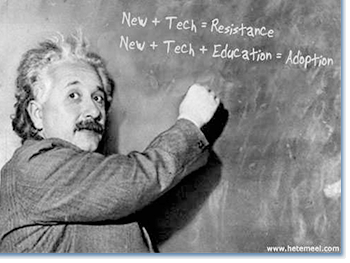Social media produced by federal agencies could be arriving at an archive or federal repository near you, reveals a recent draft bulletin from the National Archives and Records Administration (NARA). NARA staff are asking federal agencies to re-engineer their archive practices and retain digital content for the public, and, perhaps, for future generations of historians. In addition, the authors are asking the public for guidance and comments in this area, as well as the issue of transferring permanently valuable social media records.
 |
As part of President Obama’s Open Government Initiative to increase transparency , federal agencies are being pushed to use the latest social media tools to deliver information more quickly and efficiently. This includes NARA, the National Aeronautics and Space Administration (NASA), the Environmental Protection Agency (EPA), and the Department of State— all of which have made noticeable investments in digital communication recently in the form of official agency blogs and Tumblrs. These web properties are the first line of communication for federal business and hold valuable insights into the agencies’ policies and missions.
The bulletin, published on June 26, provides best practices for federal agencies on managing and evaluating social media records produced for federal business. The term social media includes, but is not limited to, government-hosted blogs, wikis, video and photo libraries, virtual worlds, and social networking platforms. In order to be considered a complete federal record, the digital content must have “content, context, and structure along with associated metadata.” Among the list of social media content already designated as permanently valuable is the State Department’s official blog, DipNote, and (while not produced by a federal entity) the complete archive of Twitter recently acquired by the Library of Congress.
The bulletin recommends that agencies establish “social media work groups” to consider a standard set of criteria when recommending social media content for preservation, including its relevance to the agency’s work, how it was disseminated, and what the content reveals about the agency’s overall policies and values.
It should be noted that the June bulletin is an updated version of a 2011 bulletin that originally established best practices for social media record keeping. The newest draft tackles technical questions about how to capture social media content for preservation in “a manner that ensures their authenticity.”
NARA is soliciting comments from the public on the draft until tomorrow, July 12, on its Records Express blog, found here, and I encourage our readers to take a look, and add their thoughts. While historians typically only deal with records that have been processed and cataloged, this a unique opportunity to become involved much earlier in the process. Of particular concern for our discipline, should NARA be more clear about what criteria determines the value and permanency of a federal record? How quickly will social media records be made available? What sorts of web capture tools do digital humanists use, and could they be useful in these cases?
Asking NARA to consider these questions early in the policy process will go a long way towards ensuring the accessibility of social media records for future generations of historians.
This post first appeared on AHA Today.
Tags: AHA Today Digital History Thematic
Comment
Please read our commenting and letters policy before submitting.






